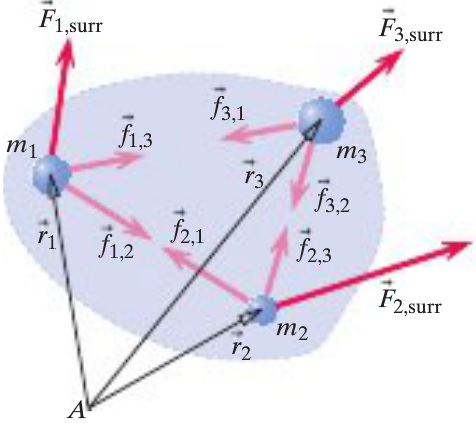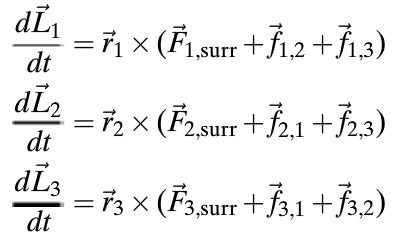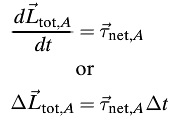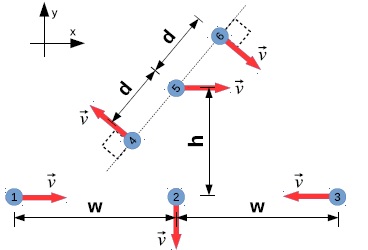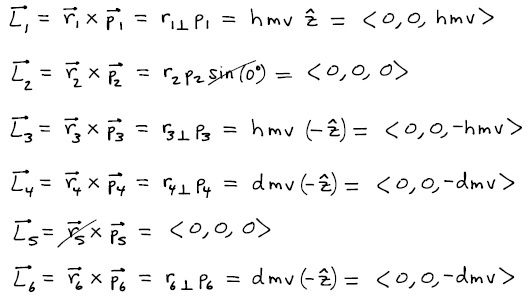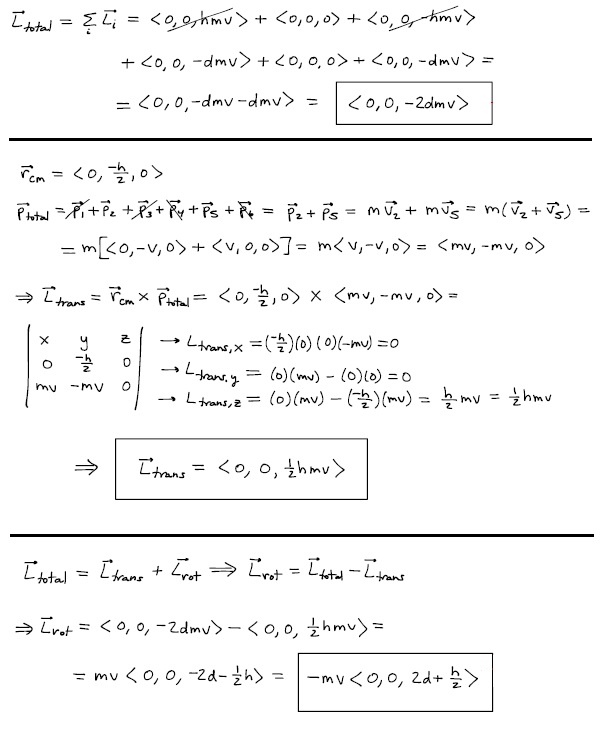Angular Momentum of Multiparticle Systems: Difference between revisions
No edit summary |
No edit summary |
||
| Line 58: | Line 58: | ||
Are there related topics or categories in this wiki resource for the curious reader to explore? How does this topic fit into that context? | Are there related topics or categories in this wiki resource for the curious reader to explore? How does this topic fit into that context? | ||
=== | ===External links=== | ||
[http://p3server.pa.msu.edu/coursewiki/doku.php?id=183_notes:mp_multi The Momentum Principle in Multi-Particle Systems (Video)] | |||
[http://farside.ph.utexas.edu/teaching/301/lectures/node120.html Angular momentum of a multi-component system] | |||
[http://www.damtp.cam.ac.uk/user/stcs/courses/dynamics/lecturenotes/section5.pdf Chapter 5: Systems of particles, Dynamics Lecture Notes, University of Cambridge Department of Applied Mathematics and Theoretical Physics] | |||
[http://web.mit.edu/8.01t/www/materials/modules/chapter19.pdf Chapter 19 Angular Momentum, MIT Course Materials] | |||
[http:// | |||
[http://www.rakeshkapoor.us/ClassNotes/classnotes.php?notes=TorqueAndAngularMomentum&index=1 Torque and Angular Momentum General Physics (calculus based) Class Notes | |||
Dr. Rakesh Kapoor, M.Sc., Ph.D. | |||
Former Faculty-University of Alabama at Birmingham | |||
==References== | ==References== | ||
Revision as of 03:17, 5 December 2015
The angular momentum principle may be extended to a multiparticle system to provide various insights.
Main Idea
Mathematical Model
The derivation of the angular momentum principle of a multiparticle system is most easily understood when following a simple example, in this case we will work with a three particle system:
- The angular momentum principle is written for each individual particle relative to location A, with position vectors r and external force vectors F.
- The individual equation is then summed. Note that, due to the reciprocation of forces, the internal forces f cancel out.
- The equation is now rewritten with the right side, representing net torque, as τnet,A
Computational Model
Examples
Simple
Difficult
Each of the six particles in the figure have identical mass m and moves in the x-y plane with the same speed v as indicated in the diagram. Take the location of particle 5 as the reference point for all angular momentum calculations when answering the following questions.Be sure to express your answer as a vector.
- What is the momentum of the individual particles?
- Consider the particles above as a single multiparticle system. With respect to particle 5, what is the total angular momentum of the system? What is the translational angular momentum? What is the rotational angular momentum?
Connectedness
- How is this topic connected to something that you are interested in?
- How is it connected to your major?
- Is there an interesting industrial application?
History
Put this idea in historical context. Give the reader the Who, What, When, Where, and Why.
See also
Are there related topics or categories in this wiki resource for the curious reader to explore? How does this topic fit into that context?
External links
The Momentum Principle in Multi-Particle Systems (Video)
Angular momentum of a multi-component system
Chapter 19 Angular Momentum, MIT Course Materials
[http://www.rakeshkapoor.us/ClassNotes/classnotes.php?notes=TorqueAndAngularMomentum&index=1 Torque and Angular Momentum General Physics (calculus based) Class Notes Dr. Rakesh Kapoor, M.Sc., Ph.D. Former Faculty-University of Alabama at Birmingham
References
This section contains the the references you used while writing this page
